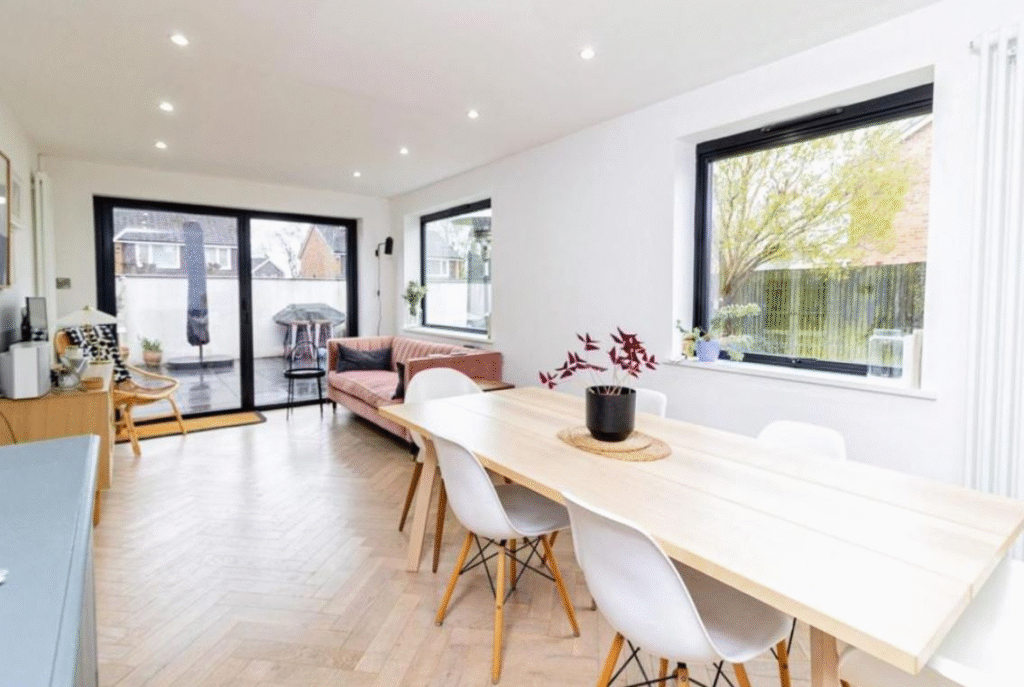Living Spaces that Feel Bigger Than They Are

Small homes can exude grandeur if designed thoughtfully. With the right approach, even the most compact corners can transform into open, airy sanctuaries. The secret lies in blending clever tricks of perception, strategic furniture placement, and harmonious use of color.
Harnessing Natural Light
Sunlight has an unparalleled ability to expand a room visually. Wide windows, sheer curtains, and reflective surfaces work together to invite more brightness inside. Light bounces from walls and mirrors, amplifying a sense of openness. To make small rooms feel bigger, prioritize natural light before artificial sources. Even a modest room with sunlight streaming in can feel twice its size.
Mirrors and Reflective Magic
Mirrors are timeless tools in interior design. A single oversized mirror or a series of smaller ones can create the illusion of spacious interiors by doubling what the eye perceives. Glass-top tables, glossy finishes, and metallic accents also serve as reflective elements, dispersing light while adding elegance.
Strategic Color Palettes
Color dictates mood, but it also influences perception of space. Lighter shades—soft whites, muted pastels, and warm neutrals—open up a room, while darker tones can make walls recede when used sparingly. An accent wall in a deeper hue paired with lighter surroundings produces depth, an effective way to maximize perceived room size without major renovations.
Furniture with Purpose
Bulky furniture overwhelms small spaces. Instead, opt for sleek silhouettes, raised legs, and multifunctional pieces. A sofa that doubles as storage or a dining table with foldable ends exemplifies space-enhancing layout tips that blend practicality with sophistication. Keep larger items minimal and allow breathing room around furniture, ensuring air and light circulate freely.
Clever Layouts
The arrangement of furniture directly impacts flow. Push seating against walls only if it improves mobility; otherwise, floating pieces can define zones without crowding. Open shelving instead of closed cabinets maintains visibility and light, preventing visual heaviness. These space-enhancing layout tips encourage natural movement, making every square foot count.
Vertical Opportunities
When horizontal space is limited, the solution is to look up. Vertical shelving, tall bookcases, and wall-mounted storage draw the eye upward, elongating the room’s dimensions. Even a tall plant in the corner gives the impression of height, furthering the illusion of spacious interiors.
Minimalism with Warmth
Decluttering is vital. Fewer items mean fewer visual interruptions, which naturally make small rooms feel bigger. Yet minimalism need not be sterile. Layered textures like soft throws, woven rugs, and natural wood accents maintain warmth while ensuring the space feels open and welcoming.
Flooring Flow
Consistency in flooring unifies a home. Using the same material throughout, such as hardwood, tile, or laminate, removes abrupt transitions that can chop up space visually. Rugs can still be used to define areas, but continuity of flooring creates harmony and helps maximize perceived room size.
Smart Use of Patterns
Patterns, when used wisely, can expand perception. Vertical stripes on walls heighten, while horizontal lines lengthen. Geometric designs with repetition can add structure, giving depth without clutter. The trick is subtlety—delicate patterns draw the eye without overwhelming the senses.
Multipurpose Rooms
For compact homes, one space often serves multiple functions. A dining area may double as a work station or a living room as a guest space. In such cases, invest in versatile furniture and discreet storage solutions. This approach reinforces space-enhancing layout tips, allowing a single room to accommodate various activities without ever feeling cramped.
Playing with Transparency
Transparent furniture like acrylic chairs or glass tables minimizes visual barriers. They allow the eye to flow freely across a room, sustaining the illusion of spacious interiors. Combined with open shelving or wire-frame accents, transparent pieces add modernity while saving valuable space.
Greenery for Breathability
Plants bring vitality and soften interiors. Strategically placed greenery enhances airiness, especially when tall, slender varieties are chosen. A vertical garden or hanging plants provide life without consuming floor space, contributing indirectly to make small rooms feel bigger.
Ceiling Tricks
Ceilings are often overlooked. Painting them in a lighter shade than the walls, or adding beams and moldings that draw the eye upward, contributes to a lofty effect. Even subtle lighting installations that graze the ceiling surface add to the sense of height, helping to maximize perceived room size.A home need not be expansive to feel generous. By embracing natural light, decluttering, and integrating reflective surfaces, it’s possible to make small rooms feel bigger without altering the structure. Through space-enhancing layout tips, careful furniture choices, and mindful use of vertical and horizontal dimensions, households can cultivate the illusion of spacious interiors. Ultimately, these techniques work together to maximize perceived room size, transforming compact spaces into inviting havens where comfort and openness coexist beautifully.






:max_bytes(150000):strip_icc()/brophyinteriorsopenfloorplanideas3-4a6eba530c684314980a12de8ca83074.jpeg?w=300&resize=300,300&ssl=1)